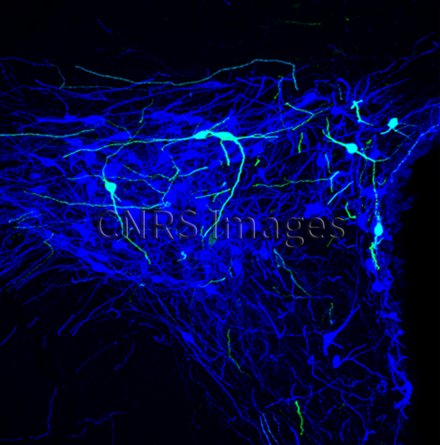Production year
2016

© Alexandre CHARLET / Valery GRINEVICH / INCI / DKFZ / CNRS Images
20170065_0001
Oxytocin-producing neurons in the brain of a rat, observed using a fluorescence confocal microscope. Oxytocin is a hormone that alleviates inflammatory pain. Research scientists have discovered that when a pain message is received from the neurons in the spinal cord, around 30 neurons in the hypothalamus activate a family of magnocellular neurons. These then release oxytocin into the bloodstream, numbing the peripheral neurons that are sending the pain message to the brain. At the same time, the hormone goes directly to the spinal cord, to the precise place where the intensity of the sensory message is encoded, via the axon, which acts as an extension of the oxytocin-producing neurons. This discovery could make it possible to target this handful of neurons to treat pathological pain and thereby limit the side effects of certain treatments. Research scientists also think that the malfunction of this system could be what causes chronic pain to become long-term.
The use of media visible on the CNRS Images Platform can be granted on request. Any reproduction or representation is forbidden without prior authorization from CNRS Images (except for resources under Creative Commons license).
No modification of an image may be made without the prior consent of CNRS Images.
No use of an image for advertising purposes or distribution to a third party may be made without the prior agreement of CNRS Images.
For more information, please consult our general conditions
2016
Our work is guided by the way scientists question the world around them and we translate their research into images to help people to understand the world better and to awaken their curiosity and wonderment.